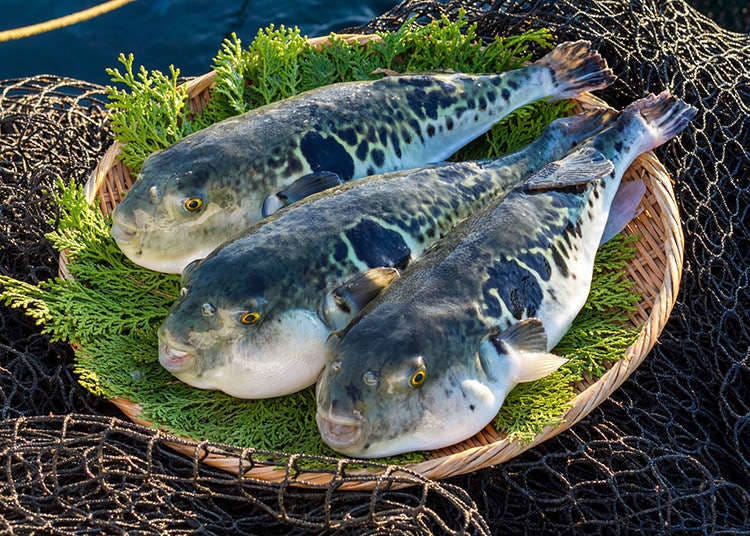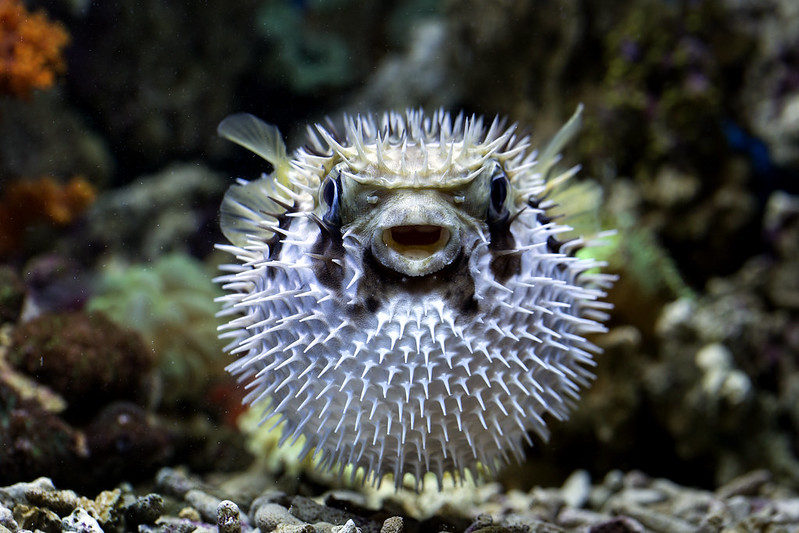A Traditional Delicacy with Deadly Risks
Fugu has long been enjoyed as a delicacy in Japan and China, but its preparation requires great skill due to the dangerous toxins contained within its organs and skin. Proper removal of these toxic parts is crucial to avoid potential poisoning or even death.
Early Consumption and Bans
The earliest Japanese to consume pufferfish were probably the Jomon people over 2,300 years ago, as excavated shell middens from this era contain pufferfish bones. However, its popularity fluctuated over the centuries. During the Bunroku-Keichō wars in the late 16th century, many samurai gathered in Shimonoseki suffered poisoning after eating contaminated pufferfish. In response, Toyotomi Hideyoshi banned its consumption with severe penalties.

Continued Dangers Lead to Widespread Prohibition
Throughout the Edo and early Meiji periods, repeated incidents of “pufferfish poisoning deaths” continued to occur. In 1882, the government even issued a summary punishment order against “those who eat pufferfish” to curb the rising cases. A full nationwide ban was established, making “eating pufferfish” illegal and punishable by imprisonment and fines.
Lifting the Ban Through Political Influence
Hirobumi Ito’s Enjoyment Revives the Culture
In 1887, Prime Minister Hirobumi Ito found himself in the inn Shunpanro during a storm with no other fish available. The proprietress bravely served him pufferfish, remembering his past enjoyment of it. Greatly praising its taste, Ito had the ban lifted in Yamaguchi Prefecture the following year.
Gradual Lifting Spreads the Tradition Nationwide
Encouraged by Ito’s positive experience, other regions followed suit in allowing “pufferfish consumption” in the years after. The formerly banned delicacy was revived on a national scale through Ito’s influential political support and gustatory enjoyment.
Modern Preparation, Risks and Regulations
Rigorous Training for Licensed Chefs
Nowadays, only chefs who complete 3+ years of intensive training and pass licensing exams may legally prepare fugu. They must demonstrate expert-level knife skills and knowledge to safely remove the liver’s “poison sac” without rupture.
Dangers Remain from Improper Preparation
Accidents still occur from amateur attempts or confusing similar fish. One infamous case was Kabuki actor Bandō Mitsugorō VIII, who died in 1975 after consuming four servings of the banned “fugu liver”.
Strict Regulations Protect Consumers
To prevent poisoning incidents, regulations tightly control the sale of fugu parts. Displays of whole fish remind diners of preparation dangers. Statistics show incidents remain rare when entering certified restaurants with properly trained chefs.
Popular Preparations and Dishes
Fugu Sashimi and Stews
Thinly sliced raw “fugu sashimi” displays the chef’s delicate knife work. Soups and stews often include the skin, imparting a unique “rubbery yet flavorful” texture.
Other Notable Preparations
Fried “fugu meat” offers a tender and sweet profile similar to chicken. The prized roe, or “fugu shirako”, takes central stage in rice stews and other dishes. Sumo wrestlers especially favor these “fugu stews”.
An Experience Worth the Risk?
While regulations now minimize dangers, fugu remains an acquired taste best left to experts. Its history shows how political will can revive even “banned” cultural delicacies at the risk of public health. For the truly curious and skilled chefs, fugu endures as Japan’s most prestigious and historically significant seafood.

 Everything You Need to Know About Self-Referential Structures in C
Everything You Need to Know About Self-Referential Structures in C